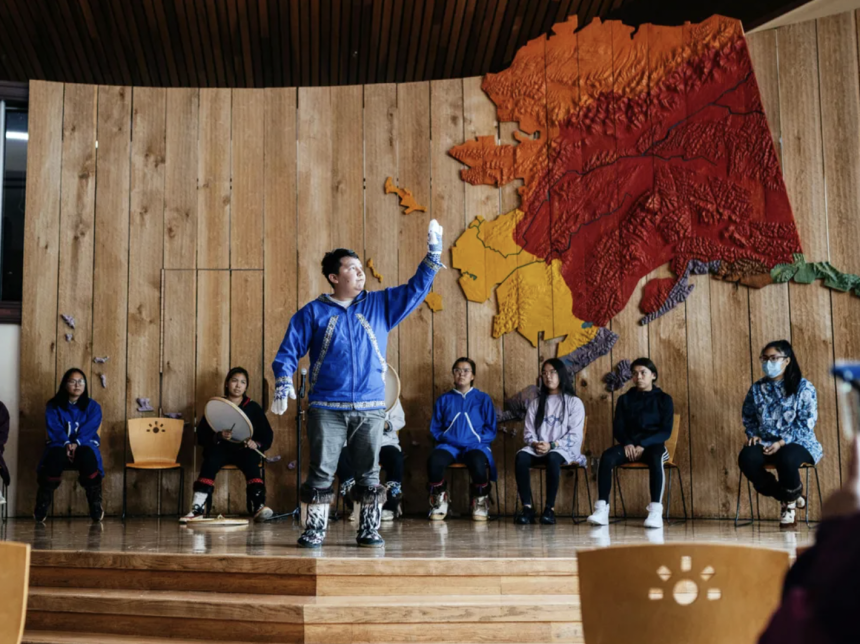Alaska, a vast and rugged land, is home to diverse Indigenous cultures that have thrived for thousands of years. The Alaskan Native tribes, including the Iñupiat, Yup’ik, Athabascan, Tlingit, Haida, and many others, each have rich traditions, languages, and histories that contribute to the unique tapestry of the state’s cultural heritage. Their deep connection to the land and its resources shapes their ways of life, art, and spiritual practices, offering a profound insight into one of the world’s most resilient and adaptive cultures.
The Importance of Land and Nature
For Alaskan Native tribes, the land is not merely a backdrop; it is central to their identity and existence. Their relationship with the environment is characterized by respect and reverence, as it provides not only sustenance but also a sense of belonging. Traditional hunting, fishing, and gathering practices are integral to their cultures, and they have developed sophisticated methods for utilizing the natural resources available to them.
The seasonal rhythms of nature dictate their lifestyles, from the spring migration of salmon to the autumn caribou hunts. Each tribe has its unique practices and beliefs tied to these natural events, fostering a sense of community and continuity. The transmission of knowledge from generation to generation ensures that these practices endure, preserving their cultural heritage while adapting to modern challenges.
Languages and Oral Traditions
Language plays a crucial role in preserving the cultural heritage of Alaskan Native tribes. Many tribes have their own languages, such as Iñupiatun, Yup’ik, and Tlingit, which encapsulate their worldviews and cultural nuances. Language is a vessel for storytelling, passing down histories, traditions, and spiritual beliefs through oral traditions.
Storytelling is a cherished practice among Alaskan Natives. These narratives often feature animals, spirits, and ancestors, serving not only as entertainment but also as moral lessons and cultural teachings. The oral traditions emphasize the importance of community values, respect for nature, and the interconnectedness of all living beings. They reflect the deep understanding that every element of the ecosystem plays a role in the larger story of life.
Art and Craftsmanship
Artistic expression is another vital aspect of the cultural heritage of Alaskan Native tribes. Their artwork often reflects their relationship with nature and is deeply rooted in spiritual beliefs. Traditional crafts such as totem pole carving, basket weaving, and beadwork showcase not only their artistic skills but also their cultural narratives.
Totem poles, for example, are not merely decorative; they serve as important cultural symbols that tell stories of lineage, history, and community values. Each figure carved into a totem pole holds significance, representing clans, family histories, and spiritual beliefs. The intricate designs and craftsmanship involved in creating these poles highlight the artistic heritage passed down through generations.
In addition to totem poles, the use of natural materials in crafts—like wood, bone, and ivory—demonstrates a sustainable approach to artistry. Many tribes employ traditional techniques that honor the resources provided by their environment, creating beautiful objects that carry both practical and spiritual significance.
Spiritual Practices and Beliefs
Spirituality is woven into the fabric of life for Alaskan Native tribes. Their beliefs often center around a deep connection to the land, animals, and the elements. They see the natural world as infused with spiritual significance, where everything is interconnected. This worldview fosters a profound respect for all forms of life and a commitment to stewardship of the land.
Ceremonies and rituals play a vital role in maintaining spiritual practices. Events such as potlatches, healing ceremonies, and seasonal celebrations reinforce community bonds and cultural identity. These gatherings provide an opportunity for storytelling, dancing, and the sharing of food, allowing the community to come together in celebration and reflection.
In many tribes, the belief in animism—a worldview that attributes spiritual essence to animals, plants, and natural phenomena—shapes their interactions with the environment. This perspective fosters an understanding of the roles animals play in the ecosystem and emphasizes the importance of harmony between humans and nature.
In the heart of these beliefs lies the recognition of the significance of animals in Alaska, which serve as symbols of strength, wisdom, and resilience. Many stories and teachings revolve around animal figures, offering moral lessons and guidance.
Modern Challenges and Resilience
Despite the rich cultural heritage of Alaskan Native tribes, modern challenges such as climate change, economic development, and social issues threaten their traditional ways of life. The impacts of climate change are particularly pronounced in Alaska, affecting hunting grounds, fish populations, and migratory patterns. As ice melts and habitats change, tribes are forced to adapt to preserve their cultural practices and food security.
Alaskan Native communities are rising to these challenges with resilience. Many are actively engaged in cultural revitalization efforts, working to preserve their languages, arts, and traditional practices. Language immersion programs, cultural camps, and community events are being organized to ensure that younger generations connect with their heritage.
Additionally, the integration of traditional ecological knowledge with modern conservation efforts highlights the value of Indigenous perspectives in addressing environmental issues. By combining scientific approaches with traditional knowledge, tribes are taking a proactive stance in protecting their lands and resources.
Celebrating Diversity and Unity
The cultural heritage of Alaskan Native tribes is not only a source of pride but also a testament to the strength and resilience of Indigenous peoples. Each tribe has its unique traditions and stories, yet they share common values that emphasize community, respect for nature, and the importance of cultural identity.
As more people come to appreciate the richness of Alaskan Native cultures, there is an increasing recognition of the need to preserve and celebrate this diversity. Cultural festivals, art exhibits, and educational programs offer platforms for sharing traditions and fostering understanding between Indigenous and non-Indigenous communities.
In recent years, there has been a growing movement to ensure that Alaskan Native voices are heard in discussions about land management, resource development, and cultural preservation. This engagement is vital for fostering mutual respect and understanding, creating a collaborative approach to address the challenges facing these communities.
Conclusion: A Living Heritage
The cultural heritage of Alaskan Native tribes is a living testament to the resilience and adaptability of Indigenous peoples in the face of change. Their deep connections to the land, languages, art, and spiritual beliefs reflect a profound understanding of the world that continues to inspire and educate.
As Alaskan Natives navigate the complexities of modern life, their commitment to preserving their traditions and adapting to new realities ensures that their rich cultural heritage remains vibrant for future generations. By celebrating this diversity and honoring the wisdom of Indigenous cultures, we contribute to a broader understanding of humanity’s interconnectedness and the importance of stewardship for our planet.
Lynn Martelli is an editor at Readability. She received her MFA in Creative Writing from Antioch University and has worked as an editor for over 10 years. Lynn has edited a wide variety of books, including fiction, non-fiction, memoirs, and more. In her free time, Lynn enjoys reading, writing, and spending time with her family and friends.















